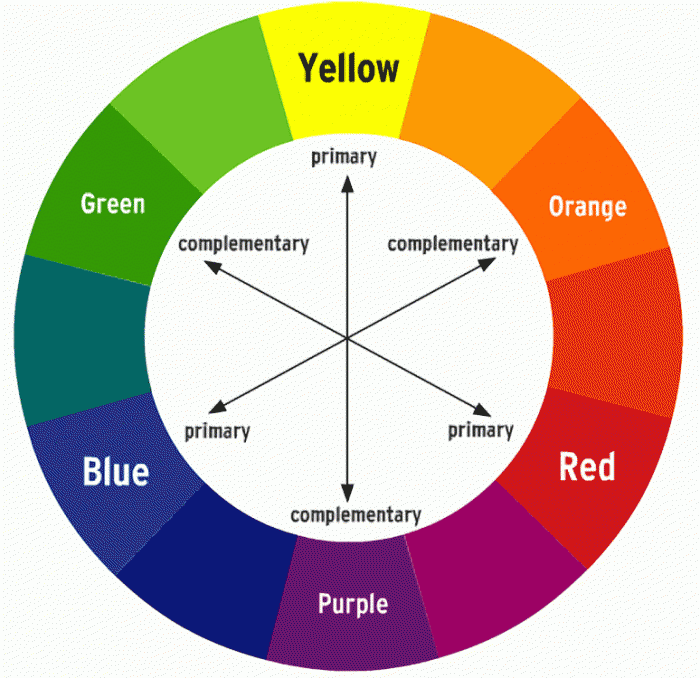When it comes to church branding, you’re probably more concerned with building a website and establishing a presence on social media.
However, before you do all of that, you need to pick a color scheme for your church. As unimportant as it may sound, the colors you choose to represent your church have a major impact on how potential new visitors see you.
In this article, we’ll dive deep into why it’s important for you to choose a color scheme, and what it could do for your church. While it’s not the most important thing in branding your church, we believe it is something can make a huge improvement, so why not learn more!
Ready to jump in? Let’s go.
Estimated reading time: 16 minutes
Table of contents
What’s So Important About a Color Scheme?

So what is so important about choosing the right color scheme for your church, anyway? It’s not worship, it’s not a sermon, it’s not a great church website. This is true, the color scheme isn’t the most important thing in your church. But it can be hugely beneficial to your church’s branding.
Think about it: how many things would your church’s color scheme affect? It could affect the colors on your website. It could affect the color your building is painted. The color scheme could affect your church’s logo. All the headings and design on handouts and pamphlets you hand out to your congregation. It could make all of your branding and design easier and more united.
Let’s learn more.
Where You’ll Use Your Color Scheme
Picking a color scheme for your church isn’t about just choosing a few colors for your website. Instead, your color scheme is used consistently throughout your church’s branding.
Some churches even choose their colors while building the actual church itself. Why? The colors you choose are a direct representation of your church’s personality and message. They give life and personality to your church.
Still not sure how you’d use a color scheme in your church? Here’s just a few common ways:
- design of the church
- Website
- Social media
- Logo
- Pamphlets and flyers
- Gifts for volunteers
- Swag for visitors
- Buttons, hats, and shirts for volunteers
- Bible covers/cases
- Church app
- Building (paint, walls, wood, etc.)
As you can see, your colors quickly become an integral part of your church. Using the same colors consistently helps people immediately recognize your brand just by the colors. If you’re trying to expand your reach, this can be incredibly helpful in building trust with your members and online followers.
The Surprising Importance Of Colors
Did you know that color has a direct impact on how you view a brand? Different colors evoke different emotions and thoughts. For instance, bright red tends to make you think of passion and youth. Navy blue evokes power and authority.
The color scheme you use helps you to instantly form a connection with those you interact with your church’s brand. That’s why brands take their time in choosing which colors they want to represent them. It’s also why many brands change their colors when they re-brand.
Surprisingly, color can have just as much impact in how your brand is perceived as your tagline and/or message. Honestly, it’s that important. Even if people don’t realize it, they generate a first impression the moment they see your colors. Obviously, you want it to be a good first impression that encourages them to keep engaging with your church.
How Color Can Make Or Break A Brand
The wrong color choice can hurt your brand. It can easily send the wrong message. For instance, if your church is trying to appeal to a younger crowd, the wrong color scheme could actually drive them away.
While it may sound like we’re putting too much emphasis on color, it does make a difference. One great example – the Cardiff City Bluebirds. Their original logo featured their signature blue color prominently. Their re-branded logo was mainly red, which didn’t represent them at all. As a result, fans were just confused versus excited.
Gist Brands highlights some of the worst color mistakes a brand can make and that includes churches. Some of the top mistakes that could hurt your church include:
- Using bright colors just to stand out (comes off as you’re just wanting attention versus focusing on faith)
- Just going with your favorite colors (remember, colors have deep meanings)
- Choosing colors that aren’t easily visible on all mediums, such as web and print
- Using the same colors as your “competitors” (you don’t want to be mistaken for another local church)
- Forgetting about color hierarchy (random color placement just confuses people)
While you can always re-brand, that comes at a cost. Instead, carefully consider your color scheme ahead of time so you don’t hurt your church versus growing it.
Color Theory

We’ve briefly mentioned how color can change the way people see something or affect their moods. how does that all work and what’s the point? Well, you can use color theory (the study of how colors affect people) to your advantage. Ready to learn more?
Let’s dive in.
Understanding Color Theory
Color theory can be complex, but at its core, it’s all about what different colors mean and the power they have when combined. Hubspot has one of the easiest to understand explanations of color theory and how to use a color wheel, which you will need to use.
Color theory involves three sets of colors – primary, secondary and tertiary. Your primary colors are red, yellow and blue. They’re called primary because they’re the three base colors that other colors are built from. They’re also the basis for many brands’ color schemes.
Secondary colors come from a mix of any two primary colors. For instance, you get green when you combine blue and yellow. Secondary colors also work well to base your church’s color scheme on.
Finally, you get into tertiary colors, which are a combination of primary and secondary colors. These are typically the colors you use for secondary elements in your color design.
All of these colors fit together, but figuring out how they fit together can be confusing. This is why blue jeans are so popular. It’s easy to match pretty much any shirt with them. When it comes to branding, there’s not really a blue jean equivalent.
That’s where a color wheel comes into play. You use it to see how colors fit work together as they’re placed in their natural rainbow sequence along with various hues and tones.

Of course, color theory gets more advanced when you consider how to make it work for your church. You can choose to focus mainly on a single color and the monochromatic variations, which are created by adding more black or white to the original color.
You can also opt for three bold colors to create a high contrast color scheme. This works well to instantly grab attention, but may not always work well for churches.
These are just a few of the different types of styles you can get just from using a color wheel. The one lesson to remember above all else, though – start with a single main color. Once you do this, the rest of your color scheme falls into place much easier.
The Subconscious Messages Colors Send
Color theory is great and all, but it doesn’t help you figure out how to send the right message through color branding. To pick the right color scheme for your church, you have to think about how colors evoke different emotions and thoughts.
Like the red example earlier, you see red as a bold, vibrant, passionate color. It’s not a conscious thought. It’s just something you feel.
The psychology behind color is rather complex. While there are basic rules, people’s personal experiences can often change how a color is perceived. For instance, someone who had bad experiences on a school bus may hate the color yellow, even though yellow is seen as one of the happiest colors.
However, you have to consider the subconscious emotions when choosing a church color scheme. One study even found that sometimes people pick a product based mainly on color. When someone’s deciding which church to visit or to follow online, the color of your logo could be the deciding factor.
George Moller provides a useful cheat sheet to explain the emotions behind certain colors. The company Vistaprint also goes more in-depth in another color behavior guide. A few quick takeaways include:
- Orange – playful and friendly (a nice welcoming option for churches)
- Light blue – tranquil and trustful (another nice option)
- White – virtuous and healthy (a good symbol of faith and hope)
- Yellow – happy, yet can be a warning color (great when used in moderation)
- Purple – royal and luxurious (a great symbol of God’s kingdom)
Of course, you also have to consider colors in the context of church. Different colors have different biblical meanings. For instance, blue often symbolizes the word of God, while orange symbolizes deliverance. You’ll usually see pastors and church leaders wearing purple as it symbolizes priesthood and kingship.
Color Meanings provides a great cheat sheet when it comes to checking the biblical meanings of colors before you pick a color scheme for your church.
Choosing the Right Color Scheme for You

We’ve learned a lot about the importance of a color scheme and what all the colors mean. So how do you choose the right color scheme for you? Let’s explore.
Understand Your Church’s Identity and Values
Before selecting a color scheme, it’s essential for a church to understand its identity and values. Start by examining the mission, vision, and beliefs of the church. What are the core principles that guide the congregation? What message does the church want to convey to its members and the community? Understanding these aspects will provide a foundation for choosing colors that reflect the essence of the church.
Consider the architectural style and interior design of the church. The existing features and decor can influence the choice of colors. For example, if the church has stained glass windows with predominant colors, you may want to complement those hues in the interior design. Harmonizing the color scheme with the architectural elements creates a cohesive and visually appealing space.
Engage with the Congregation and Seek Feedback
Involve the congregation in the decision-making process by seeking their input and feedback on color preferences. Conduct surveys, hold meetings, or create focus groups to gather opinions from church members. Ask questions like: What colors resonate with you spiritually? How do you want the church environment to feel? Understanding the preferences of the congregation ensures that the chosen color scheme resonates with worshippers and fosters a sense of ownership and community.
Consider the demographics and cultural background of the congregation. Different cultures may have varying associations with colors, so it’s essential to select colors that resonate with the community’s beliefs and traditions. Consulting with church leaders and members can provide valuable insights into color preferences and cultural significance.
Additionally, consider the practical aspects of color selection. Ensure that the chosen colors are visually appealing and create a harmonious atmosphere within the church space. Test different color combinations and visualize how they will look in various areas of the church, such as the sanctuary, fellowship hall, and classrooms.
By understanding the church’s identity and values, engaging with the congregation, and considering practical aspects, a church can choose the right color scheme that reflects its essence and enhances the worship experience for worshippers. Taking the time to carefully select colors that resonate with the congregation ensures that the church environment is welcoming, inclusive, and spiritually uplifting.
5 Tips on Using Color Schemes

So that’s everything you need to know about color schemes! We hope you’ve been convinced of their importance and usage. Now that you’ve chosen your color scheme, let’s explore 5 tips on how best to utilize that color scheme in your branding.
1. Establish Your Church’s Message
You’ve probably jumped from having a few favorite colors you like to feeling overwhelmed by all the possibilities. Don’t worry. It gets much easier.
The main purpose of your church’s color scheme is to help establish your church’s message. While you’ll use components of your color scheme to inspire certain actions, such as increasing online tithing or signing up for a Bible study newsletter, your main color should represent your church’s main message.
For instance, if you want to seem more welcoming, you might opt for a base color of orange or a variation on orange. If you’re branding your youth group, you might use yellow for happiness and joy or red for youth and vitality.
As you combine multiple colors to get the perfect color scheme for your church, you’ll create a deeper message than what you’d get from just one or two colors. Remember, the tone of the color also makes a difference. A vivid blue might be slightly off-putting, but a lighter blue feels more calming and welcoming, for example.
2. Keep It Simple
No matter what color scheme you choose, please keep it simple. When you throw a bunch of different colors together randomly, it’s going to clash. Plus, it makes it much harder to decide what elements should be which colors.
Instead, choose a few main colors and colors that complement those. Ideally, you want contrast in your color scheme, but too many clashing colors from your message. A simpler color scheme for your church makes it easier for people to interact with and understand it.
3. Explore Various Color Schemes

Now, it’s time for the fun part – picking your color scheme. This is a great time to take a look at other churches and even other brands you like. Think about how those color schemes make you feel. Think about your first impression just from the colors used on the site, on the logo and even within the church, if it’s possible to visit or view online sermons.
The first step is to take a look at different types of color palettes or schemes, such as:
- Monochromatic – Involves shades darker and lighter than your main color
- Complementary – Involves colors that are directly opposite each other on the color wheel
- Analogous – Involves using colors directly next to each other on the color wheel
- Triad – Often the hardest color scheme to master, but involves three sets of colors of equal distance from each other on the color wheel
- Neutral with a pop – Involves mainly neutral colors, such as black, grey and brown, but with one “pop” color to stand out from the rest
While there are other types of color palettes, most brands stick with these because they’re tried and true. They’ve been proven to work, so instead of reinventing the wheel, start your search for the perfect color scheme for your church with these types of color schemes.
No matter what you choose, always test it out before you make a final decision. Involve your members and see what they think of various color schemes. Create a test site that requires members to have a password to access. Hand out sample pamphlets. You could even design a room in your church with your sample colors.
4. Helpful Color Palette Tools
No one expects you to magically know which colors work well together. That’s why color palette tools are your church’s best friend.
Some of the best (and free) options include:
- Adobe Color CC
- Paletton
- Cohesive Colors (incredibly easy to use, but basic)
- Khroma (one of the more advanced)
- Coolors (various types of palette generators)
- ColorSpace
Do you have an image that just fits your church perfectly? You can design a color scheme for your church around an image. In fact, and Colormind help you do just that.
Interested in what the most popular church color schemes are? Check out iColorPalette’s list of inspirational color schemes to help inspire you.
Take your time and test out various color schemes to see what speaks to you and your members. In the end, all the hard work is well worth it when your church colors accurately represent your church’s brand in and out of church.
5. Keep it Consistent
In church branding, it’s crucial to stick to a consistent color scheme. Consistency means using the same colors in all church materials, like logos, websites, and flyers. Imagine going to a church with different colors every time you saw something from them! It might confuse you and make you think they’re not organized.
People prefer consistency because it helps them recognize things quickly. When they see the church’s colors, they know it’s from that church right away. This makes it easier for them to connect with the church and remember important information, like service times or events.
Think of it like painting a picture. If you keep changing the colors halfway through, the picture won’t look right. But if you stick to the same colors from start to finish, the picture turns out clear and beautiful. Consistency in color scheme is like that—it helps create a clear picture of what the church stands for and makes it easier for people to see and understand. So, keeping it consistent is key for churches using color schemes in their branding!
Church Colors

Choosing the right color scheme for a church is important for creating a welcoming and meaningful environment. By considering factors like symbolism, tradition, and audience preferences, churches can select colors that reflect their values and identity.
It’s also crucial to maintain consistency across all branding materials to enhance recognition and create a cohesive visual identity. Whether aiming for a traditional or modern look, striking a balance between honoring tradition and embracing innovation can help churches connect with both current and prospective members.
Ultimately, the chosen color scheme should contribute to a sense of unity and purpose within the congregation, fostering a deeper connection to the church’s mission and message. With careful consideration and thoughtful planning, churches can use color effectively to enhance their branding and create a lasting impression on their members.
We pray your church has success in choosing and utilizing color for your brand. God bless!
Need a great church website to show off your new color scheme? Contact us today to learn how we can help.





Comments 4
Really this website is very useful
Great information.
Thank you for the resources! Certainly helpful.
Thanks for the enlightenment.
Author
You got it! Glad it was helpful.